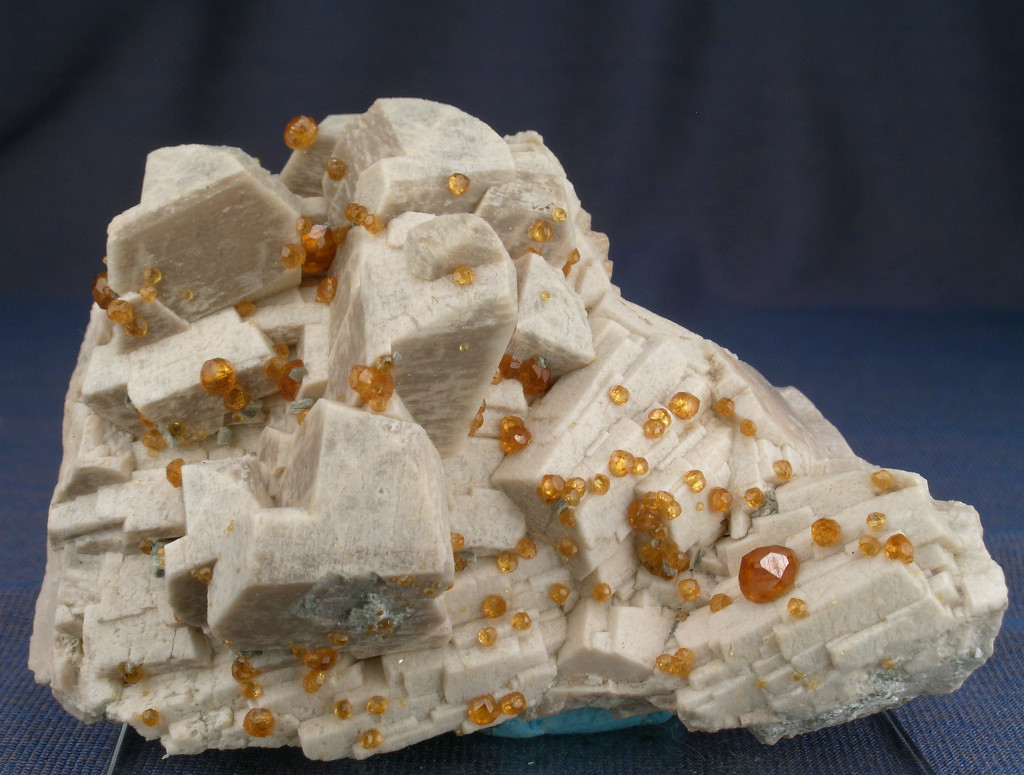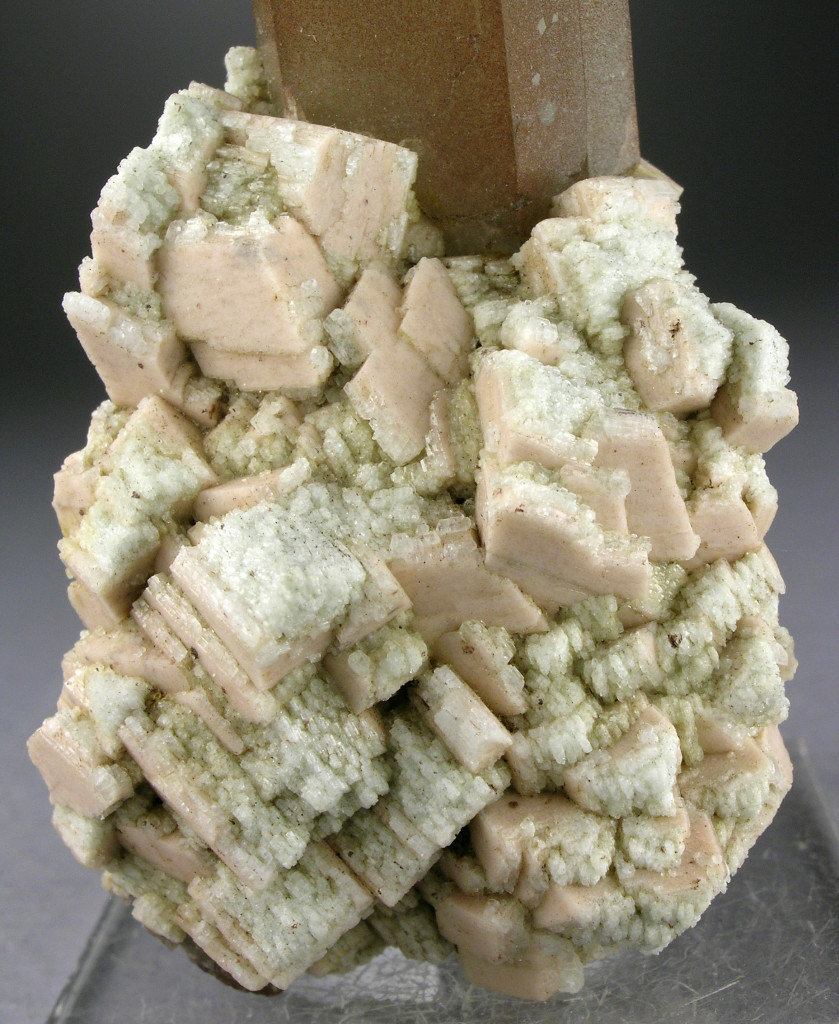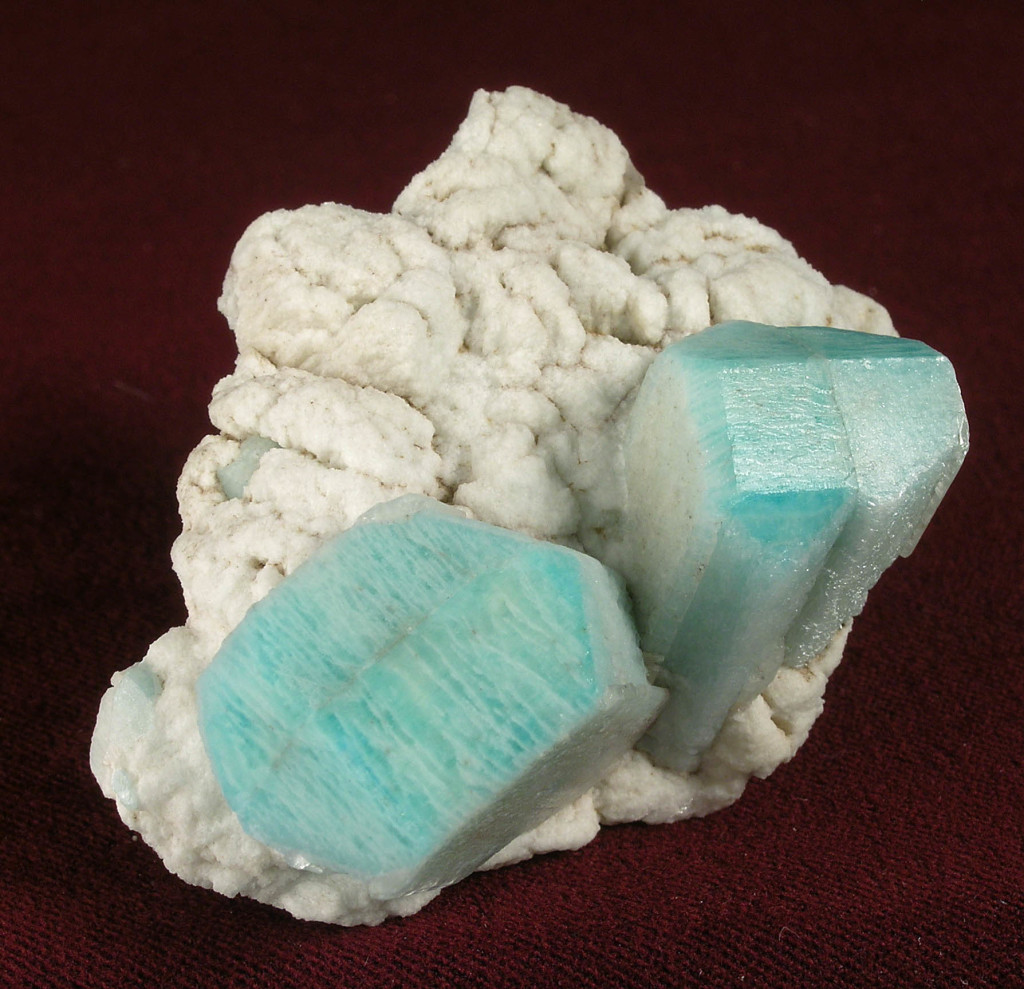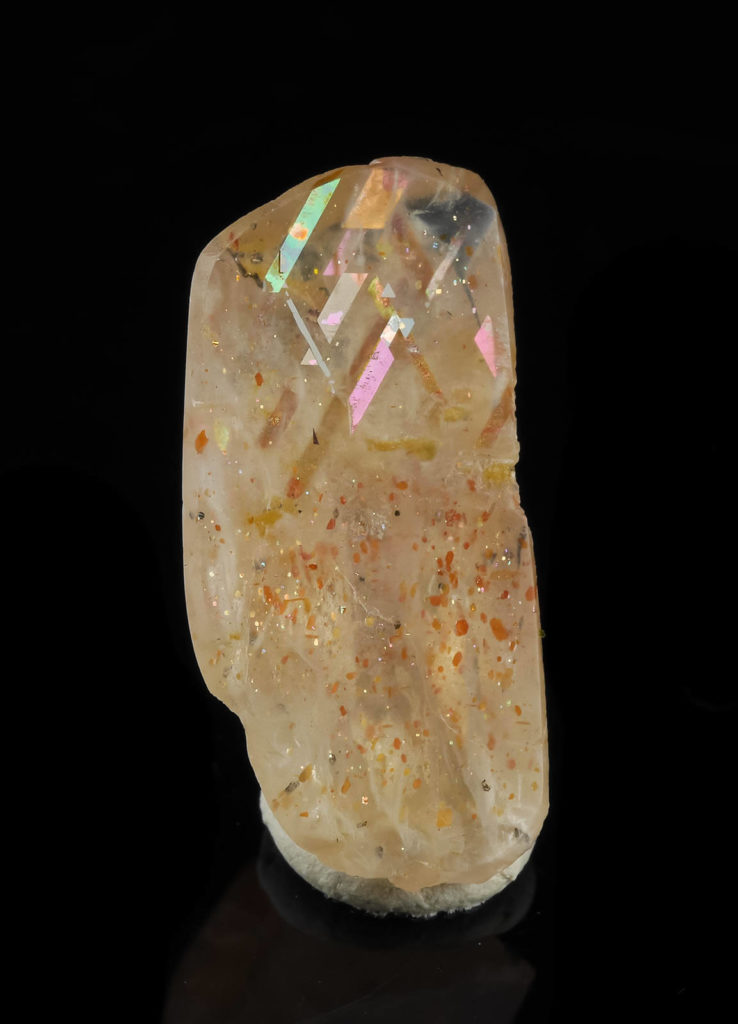Feldspars are the most abundant component of Earth’s crust and are said to compose up to 60% of its makeup. They have highly variant crystallography and chemistry which allows them to equilibrate to many different environments with varying geochemistry, pressures, and temperatures during formation. Plagioclase feldspars are the most common rock forming mineral on earth and form the ground-mass of many mafic, felsic, and intermediate rock. Sodium rich plagioclase or albite is present in more felsic rocks and is associated with alkali feldspar, mica, quartz, and many other minerals.
Calcium rich plagioclase; anorthite is found in more mafic environments associated with minerals such as hornblende, olivine, diopside, and corundum. Out of these two, typically only albite forms specimens that are collectable. The best albite specimens come from pegmatites and hydrothermal veins. Albite is a rock forming mineral in pegmatites and the characteristic, interlocking blady variety known as cleavelandite is a sign of the presence of possible pockets. Albite also forms very fine crystals in vuggy alkali foidic syenites. In pegmatites, albite forms crystals up to about 8cm in pegmatite which can sometimes be gemmy. Notable localities include Minas Gerais, Brazil, the Bennett Quarry in Buckfield, Oxford Co., Maine, and various pegmatites in Pakistan and Afghanistan. Nice specimens from alkali foidic syenites occur at Mont Saint-Hilaire, Quebec, and at Mount Malosa, Malawi. The finest albites ever found occurred in a hydrothermal vein found at the Enosburg Falls Quarry in the rural town of Enosburg, Vermont. These large, glassy crystals were found in an alpine cleft-type deposit with actinolite, chlorite, hematite roses, quartz, and epidote. Vermont albites from Enosburg resemble fine topaz more than they do albite. This occurrence is poorly known but marks the zenith of quality for the species.

Labradorite, an intermediate calcic-sodic plagiocalse is found in gabbro, basalt, and anorthosite. The best specimens of labradorite are carved from solid blocks of nearly monomineralic rock. Labradorite was first discovered near Nain, Labrador hence its name but since has been found in Finland, where it is known as spectrolite, Quebec, Minnesota, New York, Brazil, Norway, and Madagascar. Most of the ornamental cut and polished labradorite objects on the market are from Madagascar. The other labradorite localities do not produce as fine quality labradorite in such abundance.

Microcline and orthoclase are the most popular members of the alkali feldspar group among mineral collectors. The bright blue variety of amazonite- microcline is especially valuable and of high esteem. The best specimens of this interesting sea green feldspar are from the vicinity of Pike’s Peak and Crystal Peak near Colorado Springs, Colorado where they occur in vugs in granite with fine smoky quartz, fluorite, topaz, phenakite, goethite, and many other minerals. The finest specimens of amazonite from Colorado are worth tens of thousands of dollars. Amazonite always is found in a granitic environment including the occasional pegmatite. Other notable localities for amazonite are Amelia, Virginia; Minas Gerais, Brazil; the Kenticha pegmatite field, Ethiopia; Broken Hill, Australia; and Mogok, Myanmar. The most popular varieties of orthoclase in specimens are prismatic crystals occurring in pegmatites as well as miarolytic granites and adularia; a diamond-shaped variety found in alpine veins. Adularia specimens are probably the most popular form of orthoclase and occur with chlorite, quartz, rutile, apatite, titanite, epidote, and other minerals in alpine clefts. The alps of Austria and Switzerland have produced the best examples. The Acushnet quarry in Acushnet, Massachusetts also produces fine adularias that are often covered by a blanket of chlorite. Pegmatitic and granitic orthoclase crystals are very attractive on their own though they are more commonly accessory on pieces containing other more desirable minerals. Good localities for large orthoclase crystals in a granitic environment are the pegmatites of Pakistan and Afghanistan; Baveno, Italy, and the White Mountains of New Hampshire.

Yellow gem crystals of orthoclase coming from Itrongay, Madagascar have actually been recently found to be sanidine, which is usually an uncollectable mineral. Many of these specimens are still labeled as orthoclase but note that this is incorrect.
Barium feldspars are extremely rare and do not typically form aesthetic specimens desirable to collectors. Typically barium feldspars are massive, but Hyalophane from the Zagradski Potok Mine in Bosnia-Herzegovina are known to form beautiful gemmy crystals associated with smoky quartz. These specimens occur in alpine veins and are extremely rare on the market. They weren’t produced in large numbers.

